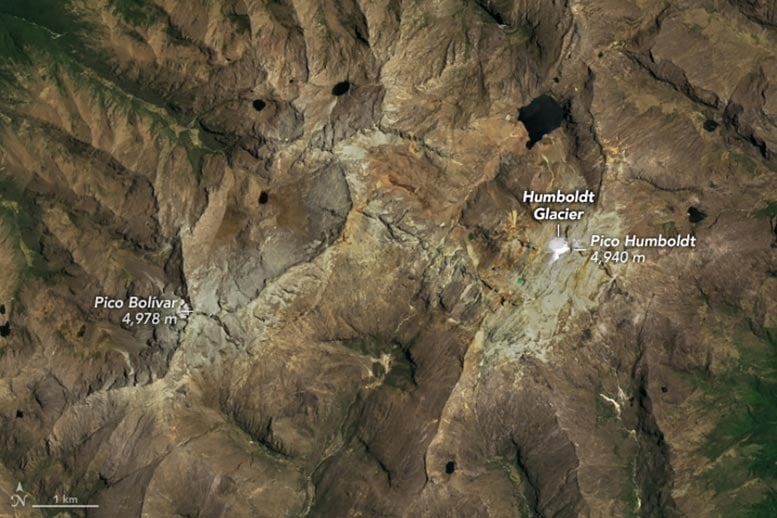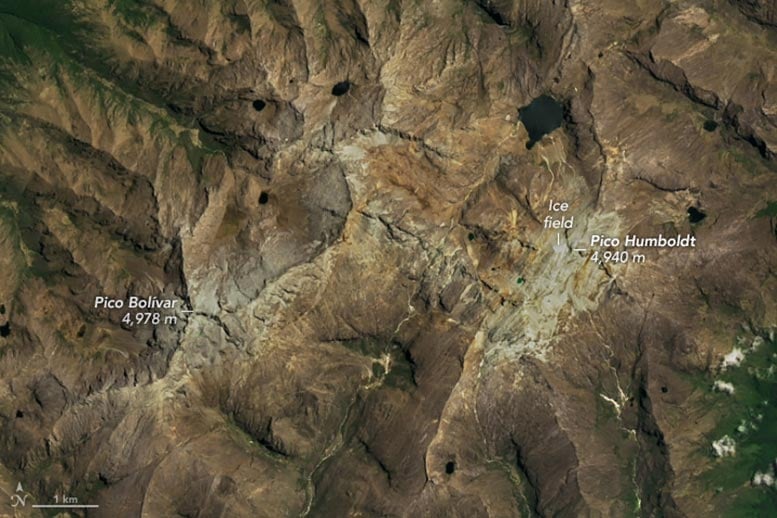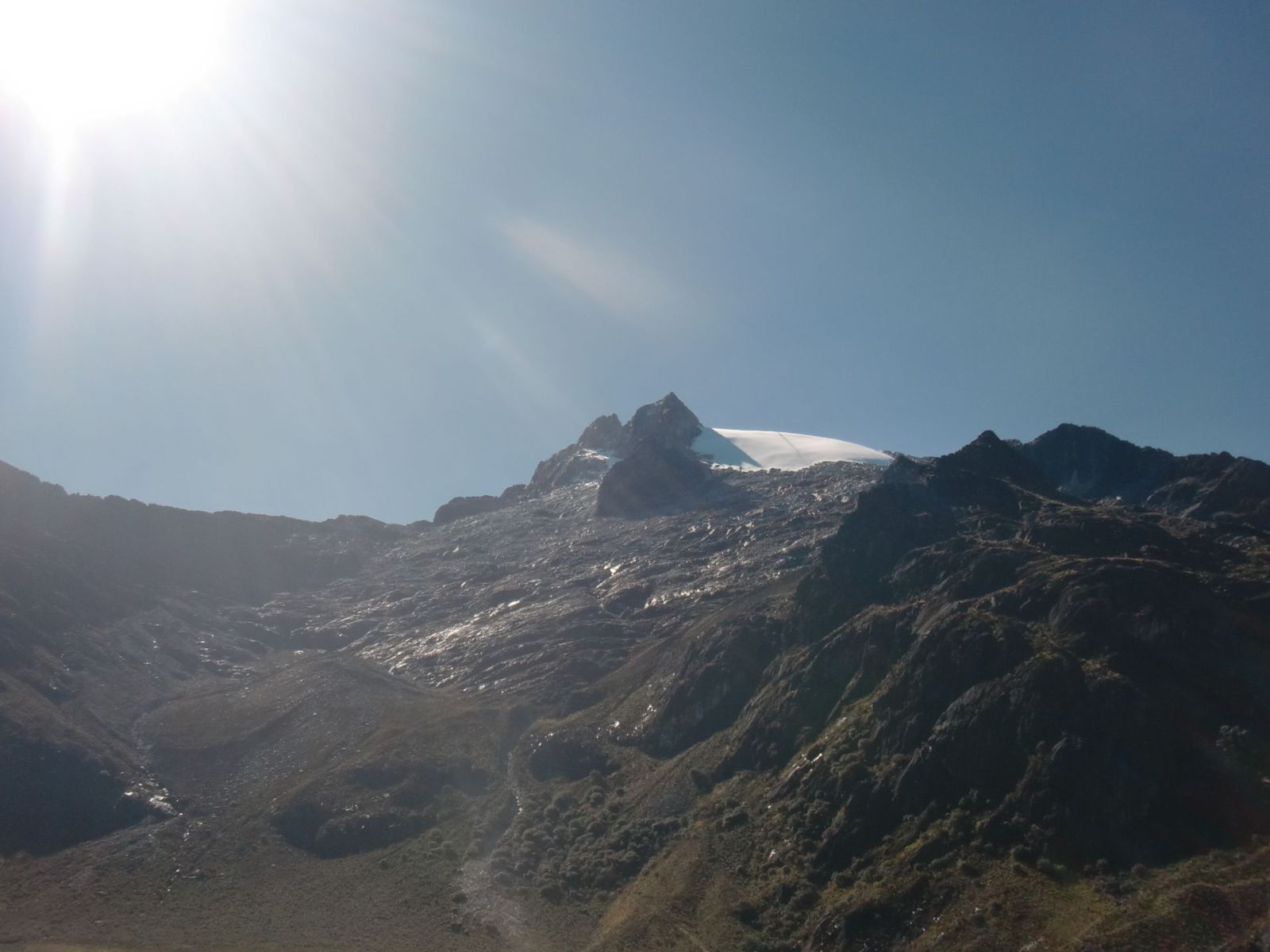Follow us on Google News (click on ☆)
The death of the Humboldt glacier is a significant blow to the world's tropical glaciers. The images show a striking contrast between the ice extent in 2015 and that in 2024. These photos, taken by the Landsat 8 and Landsat 9 satellites respectively, illustrate the dramatic melting of this glacier during the dry season.
The Humboldt glacier was located in the Sierra Nevada de Mérida, in the northern Andes of South America. In 2015, it covered about 0.04 square miles (0.1 km²). By 2024, its ice-covered area had decreased by nine-tenths.
Since 2009, Humboldt was the last glacier in Venezuela, after the disappearance of those on the neighboring peaks. Located near the equator, it survived due to its high altitude. Tropical glaciers exist due to the cold and snowy climate of high altitudes, allowing the glacier to persist until recently.
The Humboldt glacier was situated on a slope at the foot of Pico Humboldt, slightly lower than Pico Bolívar, the highest peak in the country. The topography also contributed to its relative longevity, allowing snow to accumulate and transform into ice.


Above: the Humboldt glacier in Venezuela captured on April 28, 2015 by the Operational Land Imager on Landsat 8.
Below: the Humboldt glacier in Venezuela captured on May 14, 2024 by the Operational Land Imager-2 on Landsat 9.
Despite these factors, the glacier could not resist indefinitely. Satellite evidence, ground observations, and historical sources show that the Humboldt glacier had been in decline for a long time. In 1910, it covered 1.16 square miles (3 km²); today, it covers only 0.004 square miles (0.01 km²). This reduction makes Venezuela the first country in the Andes to be glacier-free.
Other tropical glaciers show a similar response to warming. For example, the glaciers of Kilimanjaro in Tanzania and Puncak Jaya in Indonesia have become stagnant ice fields. Satellites remain a crucial tool for mapping these changes and studying the evolution of landscapes and ecosystems.
NASA Earth Observatory images by Michala Garrison, using Landsat data from the U.S. Geological Survey. Image interpretation and science review by Christopher Shuman, NASA/UMBC.
Credit: NASA Earth Observatory images by Michala Garrison, using Landsat data from the U.S. Geological Survey.
